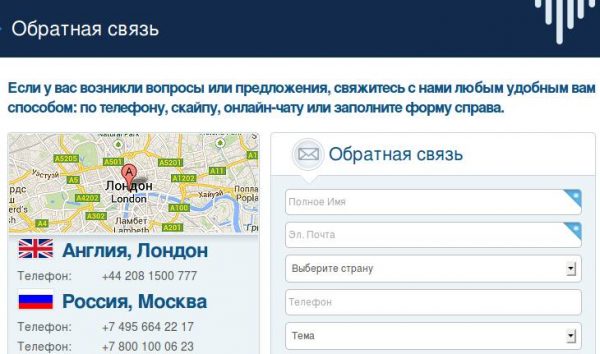Difference Between Explicit Cost and Implicit Cost with Comparison Chart
In order to find out what your profit is, you must understand what implicit and explicit costs are and how they differ. You will deal with both types of costs while doing business and must use them bookkeeping basics to determine accounting and economic profit and opportunity cost, among other things. These expenses are a big contrast to explicit costs, the other broad categorization of business expenses.
Implicit cost is the amount of money that you spend to acquire input. Explicit cost and implicit cost are different concepts because explicit cost always refers to a financial outlay while implicit cost refers to both financial and non-financial outlay. Implicit costs can also have a significant impact on economic efficiency. For example, if the implicit costs of making a particular decision are high, it may be more efficient to make different decisions that have lower implicit costs. Subtracting the explicit costs from the revenue gives you the accounting profit.
Content: Explicit Cost Vs Implicit Cost
The wages the employee would have got if he or she did not take the vacation is the implicit cost of the vacation. But, it’s pretty easy to compute if you have a list of your business expenses at the tip of your fingers. When a company hires a new employee, there are implicit costs to train that employee. If a manager allocates eight hours of an existing employee’s day to teach this new team member, the implicit costs would be the existing employee’s hourly wage, multiplied by eight.
- Implicit costs are costs that occur due to a specific path or option being chosen.
- Implicit costs are not clearly defined and don’t get reported as expenses.
- In this the transfer or loss of cash doesn’t directly take place.
- The company utilizes internal resources to train its new employee, removing them from the time they might be working on something else.
- In most cases, implicit costs are not recorded for accounting purposes.
Companies that do so, and factor implicit costs into their decisions, generally retain the resources they have and attract additional resources such as land, labor, and capital. Companies who ignore implicit costs and consider only direct costs find that despite their accounting books showing a profit, they tend to lose resources and face constraints. Accounting costs are generally easy for business owners to identify, track, and record.
Resources
In this type of cost, an outlay of cash doesn’t take place so that is why it isn’t noted, and subsequently it can’t be traced. In other words it is said that the implied cost is the direct opposite of the explicit cost. It mainly revolves around the concept of opportunity cost, which tells about the (indirect) cash or profit foregone due to opting the alternative. The loss or the profit in the implicit cost doesn’t directly have any impact on the performance of the company, although it has direct interference with the profit of the company.
Second of all, there are implicit costs, which is a factor in calculating the firm’s economic profit. This is simply the same as accounting profits, but also subtract the implicit costs. So the economic profit is calculated by obtaining the firm’s revenue and subtracting BOTH explicit and implicit costs. When it comes to your business, one of your main goals (if not your biggest goal) is to make a profit. And to find profit, you may need to look at explicit and implicit costs. Explicit costs are the out-of-pocket expenses incurred by a business in the production of goods or services.
Implicit vs. Explicit Costs
These costs have already occurred but may not be tracked or reported as separate expenses. These could be opportunity costs, such as when a company uses an asset they already have rather than renting or buying it. With implicit costs, you do not track them like business expenses in your books. Instead, you can calculate implicit costs to determine economic profit and help make smart business decisions. An implicit cost is any cost that has already occurred but not necessarily shown or reported as a separate expense.
California Legislature Requires Discrimination Against High-Income … – Econlib
California Legislature Requires Discrimination Against High-Income ….
Posted: Sun, 25 Jun 2023 12:14:49 GMT [source]
To open his own practice, Fred would have to quit his current job, where he is earning an annual salary of $125,000. The major application of the difference between implicit cost vs. explicit cost lies in the determination of economic profit as opposed to accounting profit. The most common way is to use economic theory to estimate how much an action will cost in terms of forgone benefits. Another way is to use information about how people behave in similar situations to estimate how much time, energy, or resources people will use as a result of the decision. Calculating explicit costs is simple as long as you know your business expenses. To calculate explicit costs, add together your business expenses on the general ledger.
FAQs on Explicit and Implicit Costs
Implicit costs are opportunity costs that can be termed as missed opportunities for the company. A company may choose to include implicit costs as the cost of doing business since they represent possible sources of income. Economists include both implicit costs and the regular costs of doing business when calculating total economic profit.
Explicit costs are easy to identify, record, and audit because of their paper trail. Expenses relating to advertising, supplies, utilities, inventory, and purchased equipment are examples of explicit costs. Implicit costs can take many forms, such as time lost due to indecisiveness or frustration caused by unclear information. These costs can be particularly significant when making choices that have long-term implications, such as whether to invest in a new product or service. The difference between implicit and explicit costs is that explicit costs are clear and identifiable, whilst implicit costs purely refer to the opportunity cost.


